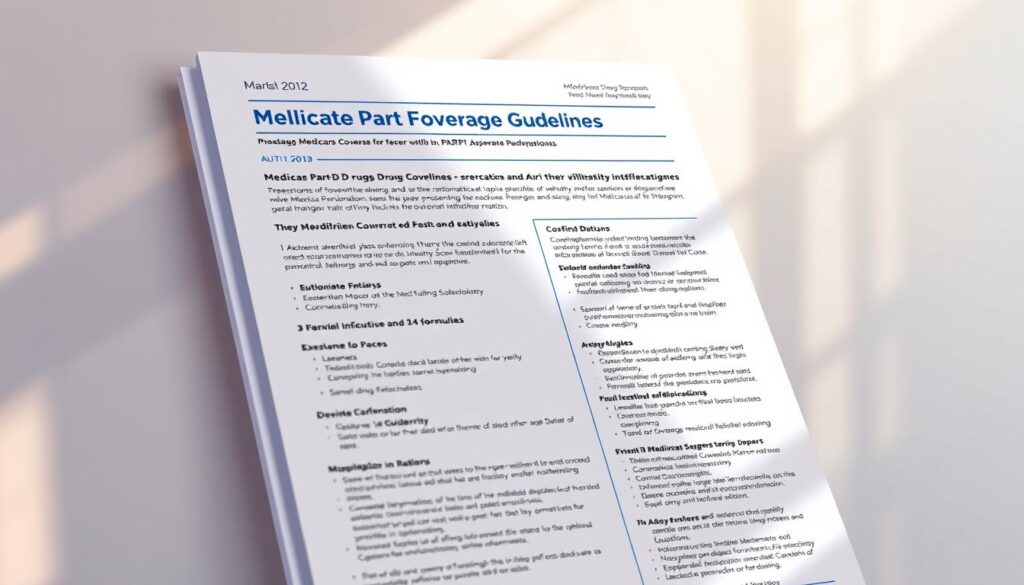Navigating prescription drug coverage can feel overwhelming, especially when managing conditions like elevated blood sugar. If you’re exploring options for medications such as Ozempic, understanding what your plan includes is critical. This guide breaks down what you need to know about eligibility and costs under federal healthcare programs.
Ozempic is FDA-approved to help adults with type 2 diabetes manage their blood sugar and reduce cardiovascular risks. However, using it for prediabetes falls outside approved guidelines. Federal prescription plans, like Medicare Part D, generally exclude off-label uses, which could leave you responsible for the full cost.
Before starting any treatment, contact your plan provider directly. Coverage details vary based on medical necessity and specific policy terms. Costs for injectable medications can add up quickly, so verifying your benefits upfront helps avoid surprises later.
In the sections below, we’ll explore how eligibility works, why certain uses aren’t covered, and strategies to manage expenses. You’ll also learn how regulatory standards shape coverage decisions and what steps to take if your request is denied.
Understanding Medicare Coverage for Ozempic
When dealing with type 2 diabetes, knowing which treatments are covered can significantly impact your healthcare decisions. Ozempic, a prescription drug containing semaglutide, is designed to help regulate blood sugar levels in adults with this condition.
What Is Ozempic and Its FDA-Approved Uses?
The drug works by mimicking the GLP-1 hormone, which slows digestion and helps the pancreas release insulin. This process lowers blood sugar and reduces cardiovascular risks. The FDA approves it for managing type 2 diabetes and lowering the chance of heart attack or stroke in those with the disease.
It’s also approved to slow kidney complications linked to diabetes. While weight loss is a common side effect, this application isn’t its primary purpose. Coverage typically focuses on its core role in diabetes care.
How Ozempic Helps Manage Type 2 Diabetes
By stabilizing blood sugar, the medication supports long-term health for those with type 2 diabetes. Pairing it with diet and exercise enhances its effectiveness. Unlike off-label uses, its approved applications align with coverage criteria under most plans.
Does Medicare cover Ozempic for pre-diabetes?
Understanding your medication options starts with knowing how federal guidelines shape coverage. While semaglutide-based drugs like Ozempic are approved for type 2 diabetes, using them for prediabetes falls into a gray area.

Limitations of Off-Label Use for Pre-Diabetes
Federal health programs follow strict rules tied to FDA approvals. Since no medications are officially endorsed for prediabetes, off-label prescriptions won’t qualify for reimbursement under most plans. This leaves you responsible for the full cost unless your provider proves medical necessity.
Prediabetes often lacks clear symptoms, making standardized treatment protocols challenging. Unlike type 2 diabetes management, which has well-defined drug formularies, preventive approaches rely more on lifestyle changes. Coverage decisions reflect this distinction.
Medicare Part D formularies prioritize evidence-based uses backed by clinical trials. If your doctor suggests Ozempic for prediabetes, ask about alternatives like nutrition counseling or metformin. Always verify your plan’s rules before starting any therapy.
Consulting your healthcare team helps balance risks and costs. While innovative treatments show promise, sticking to approved guidelines ensures your prescriptions align with coverage criteria.
Medicare Part D and FDA-Approved Indications
Prescription drug plans often hinge on precise criteria tied to federal guidelines. For medications targeting chronic conditions, coverage depends on aligning with approved uses and formulary rules. This ensures your health needs match what your plan is designed to support.

Formulary Requirements and Cost Considerations
Each Part D plan categorizes drugs into tiers affecting your out-of-pocket cost. Ozempic typically falls under higher tiers due to its specialty status. Copayments may range from $40 to $100 monthly, depending on deductible phases and coverage gaps.
Formularies update annually, so verify your plan’s current list. Some policies exclude GLP-1 agonists unless you meet specific blood sugar thresholds. Tier exceptions require documentation from your doctor.
Prior Authorization and Eligibility Factors
Insurers often require proof of disease progression before approving semaglutide prescriptions. This includes recent HbA1c tests or evidence of cardiovascular risks. Without prior authorization, claims get denied automatically.
Eligibility also depends on trying lower-tier medications first. If metformin or lifestyle changes fail to control your sugar levels, your appeal gains strength. Always keep records of previous treatments.
Coverage of Diabetes Management and Related Health Issues
Plans prioritize FDA-approved uses like reducing heart disease risks in type 2 diabetes. Off-label applications for weight loss or prediabetes won’t qualify. Some policies cover nutritional counseling alongside prescriptions.
Review supplemental benefits if you have complications like neuropathy. While Ozempic addresses core symptoms, additional therapies might need separate approvals. Balancing health priorities with plan limitations requires careful planning.
Navigating Off-Label and Weight Loss Uses
Understanding insurance rules for off-label prescriptions requires knowing how policies prioritize evidence-based treatments. Federal plans like Medicare Part D follow strict guidelines tied to Food and Drug Administration approvals, leaving little room for exceptions.
Why Weight Loss Uses Aren’t Covered
The Food and Drug Administration approves Ozempic for managing blood sugar in people with type diabetes, not as a standalone weight loss drug. Current laws prohibit Medicare from covering medications prescribed solely for shedding pounds. This applies even if your doctor recommends it for body mass reduction without an accompanying diabetes diagnosis.
Coverage exceptions exist only when weight loss directly supports managing another approved condition. For example, Wegovy—a similar medication—might qualify if paired with heart disease risks. Always verify formulary rules before starting treatment.
Comparing Options for Weight Management
Drugs like Wegovy share Ozempic’s active ingredient but carry different approvals. While Wegovy is endorsed for chronic weight management, most prescription drug coverage excludes it unless tied to specific health risks. Over-the-counter alternatives often lack comparable effectiveness.
Clinical guidelines emphasize lifestyle changes as first-line interventions. If these fail, discuss tiered medication options with your provider. New CMS proposals could expand access in coming years, but current rules remain rigid.
Planning ahead helps avoid unexpected costs. Explore patient assistance programs or Medicare Part savings tools if paying out-of-pocket. Your health team can help balance priorities while staying within coverage limits.
Other Insurance Options and Coverage Considerations
Exploring coverage alternatives can help you find solutions tailored to your needs. While federal plans set baseline rules, private insurers and Medicare Advantage policies often add extra layers of flexibility. These options may broaden access to medications while maintaining Food and Drug Administration compliance standards.
Medicare Advantage Plans vs. Original Medicare
Medicare Advantage bundles Parts A, B, and D into one plan, sometimes adding vision or dental benefits. These privately managed plans must cover everything Original Medicare does but might offer lower copays for tiered medications. However, they still follow strict drug administration guidelines tied to FDA approvals.
Formularies vary between carriers, so compare plans annually. Some include mail-order pharmacy discounts or preferred provider networks. Always verify if prior authorization rules differ from traditional Part D.
Private Insurance Formulary Variations
Employer-sponsored or marketplace plans create their own drug coverage rules. While many mirror federal standards, others approve off-label uses case-by-case. For example, a private insurer might cover semaglutide for prediabetes if paired with obesity-related risks.
Review each policy’s exceptions process and tier structure. Ask providers for clinical evidence supporting non-standard prescriptions. Combining private insurance benefits with manufacturer coupons could reduce out-of-pocket costs significantly.
Proactive research helps navigate this complex landscape. Contact carriers directly to clarify approval criteria and appeal options before starting treatment.
Conclusion
Managing blood sugar levels requires aligning treatment choices with your insurance plan’s rules. Federal programs typically approve medications like Ozempic only for their FDA-endorsed uses, such as type 2 diabetes care. Off-label applications, including prediabetes management, often lack coverage support.
Always review your plan’s formulary and discuss alternatives with your doctor. If weight loss or obesity contributes to health risks, explore supplemental options like Medicare Advantage. These plans may offer broader access to nutrition counseling or tiered medications.
Prioritize regular check-ups to address heart health and metabolic concerns. Staying informed about policy updates ensures you adapt to changing coverage criteria. Proactive communication with providers helps balance risk factors and treatment costs effectively.
Your health decisions should blend clinical guidance with financial practicality. Verify coverage details early, and leverage credible resources to navigate this evolving landscape confidently.
FAQ
Will Medicare pay for Ozempic if you have pre-diabetes?
Original Medicare typically covers Ozempic only for its FDA-approved use: managing type 2 diabetes. Since pre-diabetes isn’t an approved indication, most plans won’t cover it for this purpose. Check your Part D or Medicare Advantage formulary for specific rules.
Does Medicare Part D include Ozempic in prescription drug plans?
Many Part D plans cover semaglutide (Ozempic) if prescribed for type 2 diabetes. Coverage depends on your plan’s formulary, prior authorization requirements, and whether your doctor confirms medical necessity. Costs like copays or deductibles may apply.
Can you get Ozempic for weight loss through Medicare?
No. While Ozempic can aid weight loss, Medicare doesn’t cover medications solely for obesity management. Drugs like Wegovy® (semaglutide) are FDA-approved for weight loss but generally excluded from Part D coverage unless tied to specific health risks.
Are there alternatives if Medicare denies Ozempic coverage?
Yes. If denied, ask your doctor about lower-cost options like metformin for blood sugar control. Some Medicare Advantage plans or private insurers may cover alternatives like Rybelsus® (oral semaglutide) for diabetes, depending on your clinical history.
How do Medicare Advantage plans handle Ozempic differently?
Medicare Advantage plans must offer at least the same coverage as Original Medicare but often include additional formulary drugs. Check your plan’s prior authorization rules and cost-sharing details for semaglutide-based therapies.
What if Ozempic is prescribed for both diabetes and heart disease?
If you have type 2 diabetes and cardiovascular risks, Medicare may cover Ozempic under Part D. Documentation showing its role in managing both conditions can strengthen prior authorization approvals.


